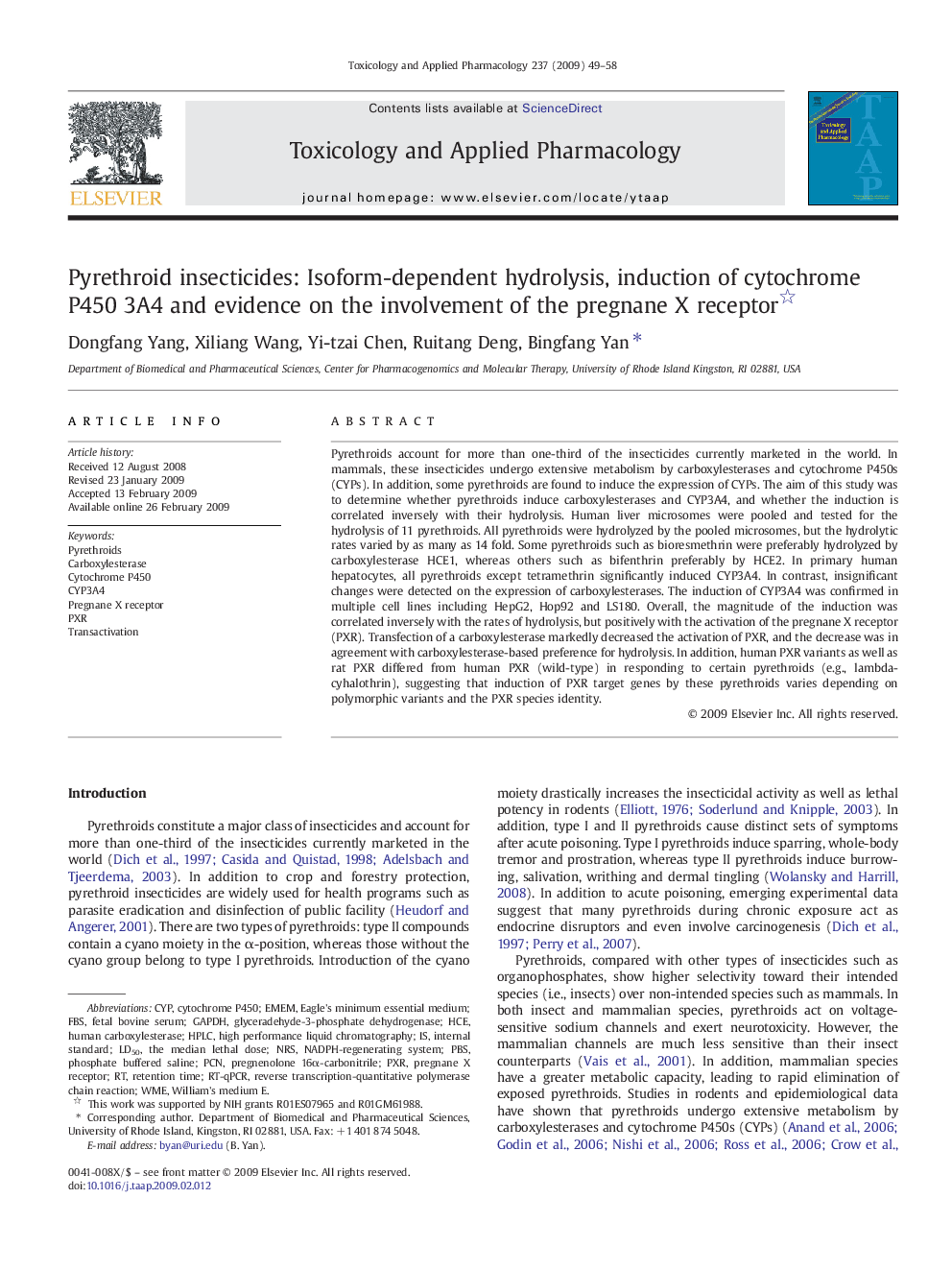| کد مقاله | کد نشریه | سال انتشار | مقاله انگلیسی | نسخه تمام متن |
|---|---|---|---|---|
| 5846965 | 1128582 | 2009 | 10 صفحه PDF | دانلود رایگان |

Pyrethroids account for more than one-third of the insecticides currently marketed in the world. In mammals, these insecticides undergo extensive metabolism by carboxylesterases and cytochrome P450s (CYPs). In addition, some pyrethroids are found to induce the expression of CYPs. The aim of this study was to determine whether pyrethroids induce carboxylesterases and CYP3A4, and whether the induction is correlated inversely with their hydrolysis. Human liver microsomes were pooled and tested for the hydrolysis of 11 pyrethroids. All pyrethroids were hydrolyzed by the pooled microsomes, but the hydrolytic rates varied by as many as 14 fold. Some pyrethroids such as bioresmethrin were preferably hydrolyzed by carboxylesterase HCE1, whereas others such as bifenthrin preferably by HCE2. In primary human hepatocytes, all pyrethroids except tetramethrin significantly induced CYP3A4. In contrast, insignificant changes were detected on the expression of carboxylesterases. The induction of CYP3A4 was confirmed in multiple cell lines including HepG2, Hop92 and LS180. Overall, the magnitude of the induction was correlated inversely with the rates of hydrolysis, but positively with the activation of the pregnane X receptor (PXR). Transfection of a carboxylesterase markedly decreased the activation of PXR, and the decrease was in agreement with carboxylesterase-based preference for hydrolysis. In addition, human PXR variants as well as rat PXR differed from human PXR (wild-type) in responding to certain pyrethroids (e.g., lambda-cyhalothrin), suggesting that induction of PXR target genes by these pyrethroids varies depending on polymorphic variants and the PXR species identity.
Journal: Toxicology and Applied Pharmacology - Volume 237, Issue 1, 15 May 2009, Pages 49-58